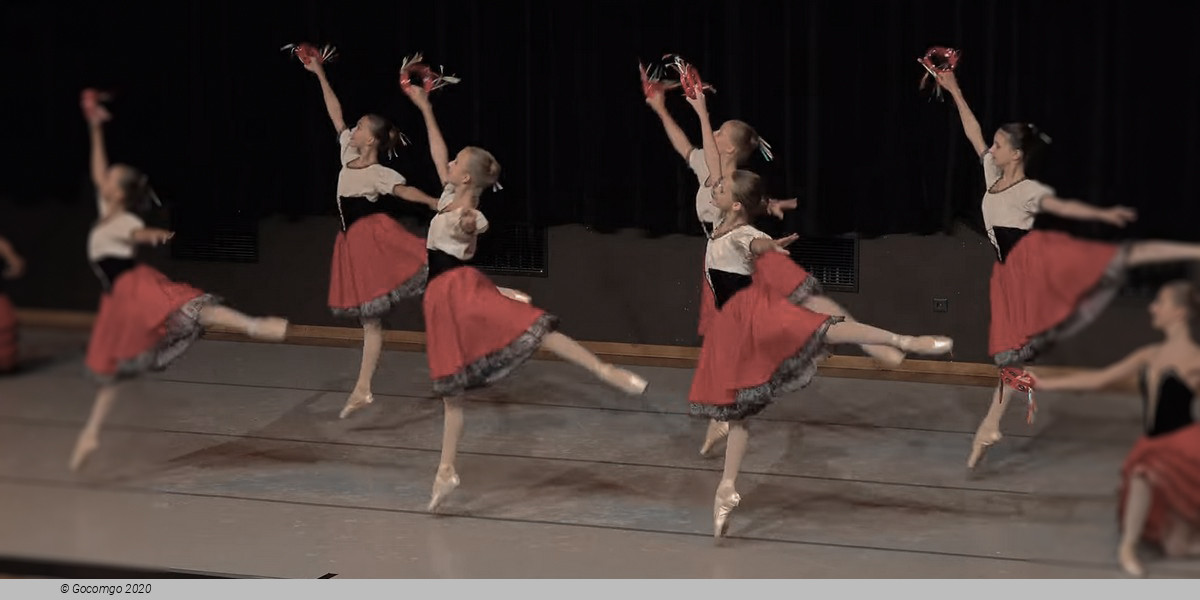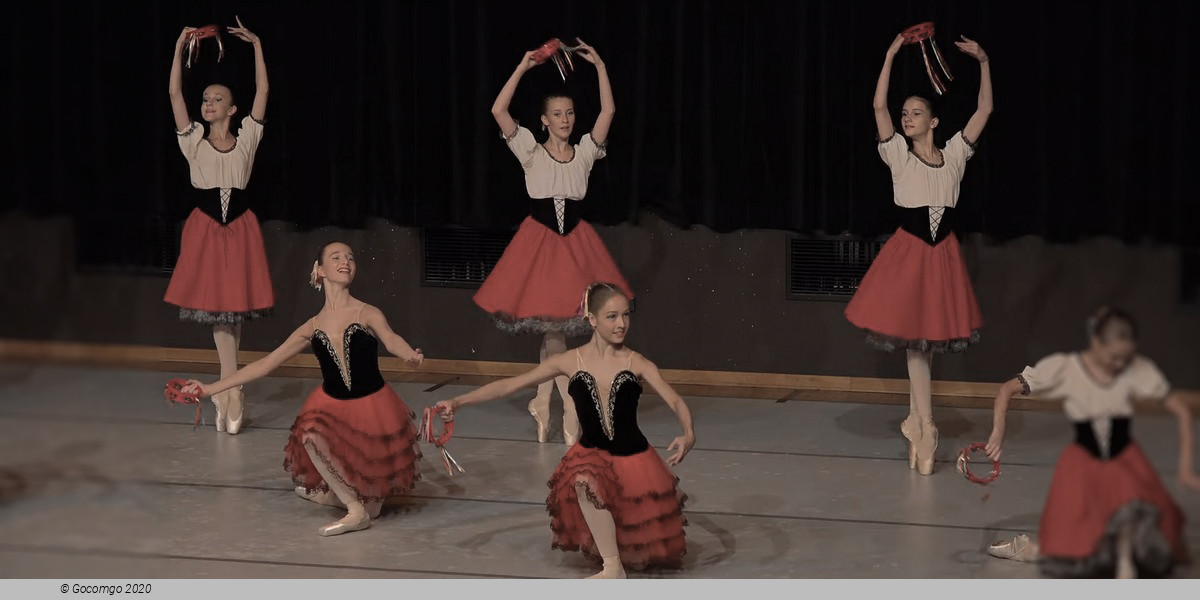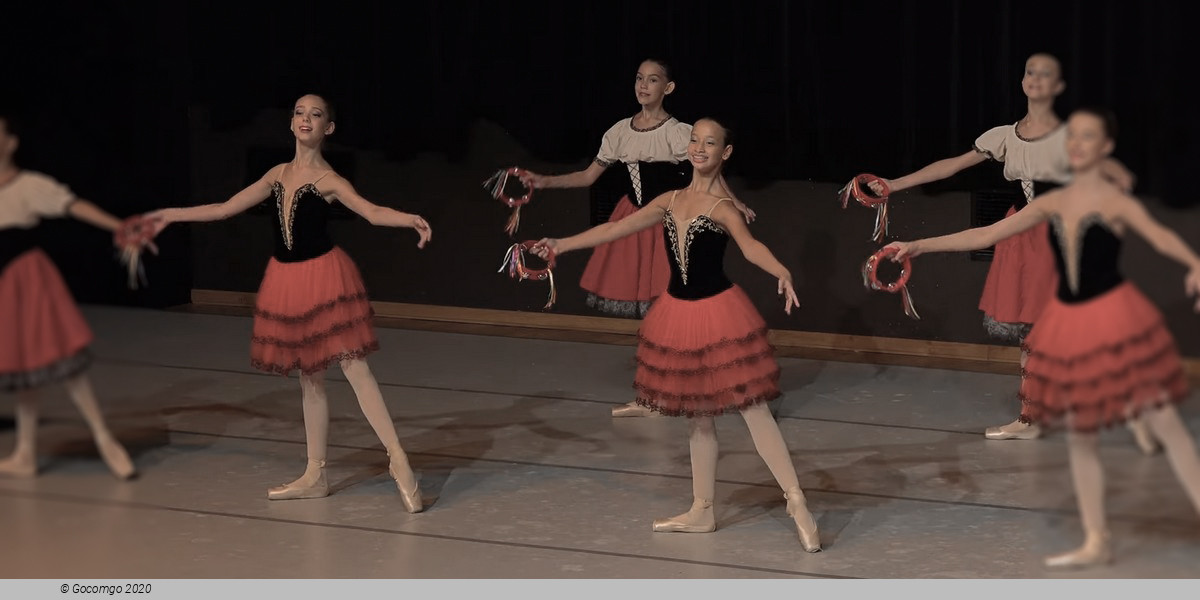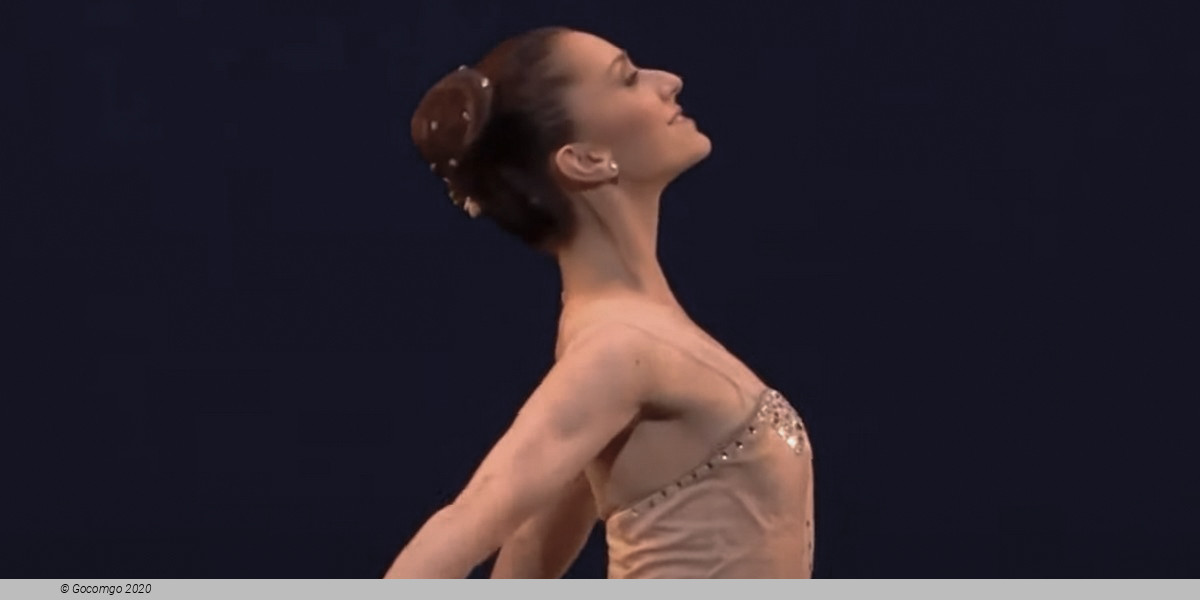A delighfully imaginative and brilliantly charming set of high-spirited works.
Christopher Wheeldon’s Carnival of the Animals makes a welcome return to the repertory. An engagingly whimsical tale, with a libretto by the actor John Lithgow, the dance depicts a young boy who falls asleep in the Museum of Natural History, only to dream that the people in his life have taken animal shapes. Three varied Balanchine classics complete this family-friendly program: the lively pas de deux Tarantella; the effervescent Tschaikovsky Pas de Deux, which showcases its dancers’ virtuosic technique; and the jubilant Stars and Stripes, Balanchine’s danced celebration of America and the march-master John Philip Sousa.
With delightful narration written by John Lithgow, Carnival of the Animals imagines a schoolboy’s night in the Museum of Natural History and the outlandish museum residents who come to life as versions of his teachers, classmates, and family members.
Created for New York City Ballet in 2003, Christopher Wheeldon’s Carnival of the Animals is set to Camille Saint-Saëns' humorous musical suite of 14 movements that the composer created for a private performance in 1886. Wheeldon’s ballet features a cast of nearly 50 dancers and tells the story of a young boy, Oliver Pendleton Percy the Third, who falls asleep in New York’s American Museum of Natural History, and dreams that the people in his life — family members, teachers, classmates — have all been transformed into animals. The production features a text written by the award-winning actor John Lithgow, who performed the narration in the original NYCB production. For the 2013 revival of Carnival of the Animals, the narration was performed by the stage and screen actor Jack Noseworthy.
The virtuosic pas de deux Tarantella showcases two pyrotechnical dancers in an ever growing profusion of steps.
This sprightly music, despite its Italian air, was composed by Louis Moreau Gottschalk (1829-1869), a New Orleans–born composer and pianist who made a large impact in his brief life. The audacity and wit of his works, along with his brilliance at the keyboard, made his compositions immensely popular — perhaps too popular, as he fell out of favor after his death, considered old-fashioned and clichéd. But Gottschalk was a true American original, and his achievements had a great impact on composers and performers who followed. Balanchine admired this particular composition and choreographed a pas de deux for Patricia McBride and Edward Villella — two virtuosic dancers — in 1964. In his Complete Stories of the Great Ballets, Balanchine wrote of the music, “It is a dazzling display piece, full of speed and high spirits. So, I hope, is the dance, which is ‘Neopolitan’ if you like and ‘demi-caractère.’ The costumes are inspired by Italy, anyhow, and there are tambourines.”
A virtuosic ballet, Tschaikovsky Pas de Deux is brief, beautiful, and beloved – an adrenaline rush for both dancers and audiences.
For the original production of Swan Lake in Moscow in 1877, Tschaikovsky composed a pas de deux for Act III at the request of Anna Sobeshchanskaya, a Bolshoi prima ballerina who was one of the first dancers to perform the lead role. Since it was composed later than the rest of the music, it was not included in the published score and was therefore not available to Marius Petipa when he choreographed his famous Swan Lake in St. Petersburg, in 1895. In its place, Petipa moved some music from Act I to Act III, and it is this piece that is now well-known as the Black Swan pas de deux. Well over half a century later, the complete and original Swan Lake score was found, including an appendix with the lost pas de deux. Hearing of its historic discovery, George Balanchine asked for — and was granted — permission to use it for his own choreography. The result is an eight-minute display of ballet bravura and technique.
Set to Sousa's buoyant marches and dressed in Karinska's delightful all-American costumes, Stars and Stripes contains as much pure dancing as many full-length classical ballets.
For all its exuberant patriotic touches, Stars and Stripes contains as much pure dancing as many full-length classical ballets. The work is divided into five “campaigns,” each of which uses different themes from John Philip Sousa’s marches. When asked why he chose to choreograph a ballet to Sousa, Balanchine replied, “Because I like his music.” Stars and Stripes has been performed for many memorable occasions, including Nelson Rockefeller’s inauguration as governor of New York, tributes for Presidents John F. Kennedy and Lyndon B. Johnson, and the opening ceremonies for the New York State Theater (now the David H. Koch Theater) at Lincoln Center. The ballet is dedicated to the memory of Fiorello H. LaGuardia, mayor of New York City from 1934 to 1945 and founder of the City Center of Music and Drama.








 20 Lincoln Center Plaza
20 Lincoln Center Plaza